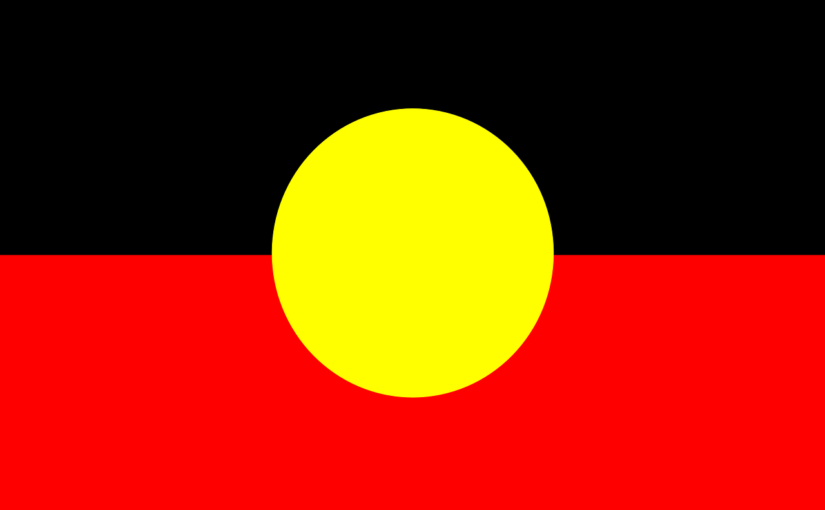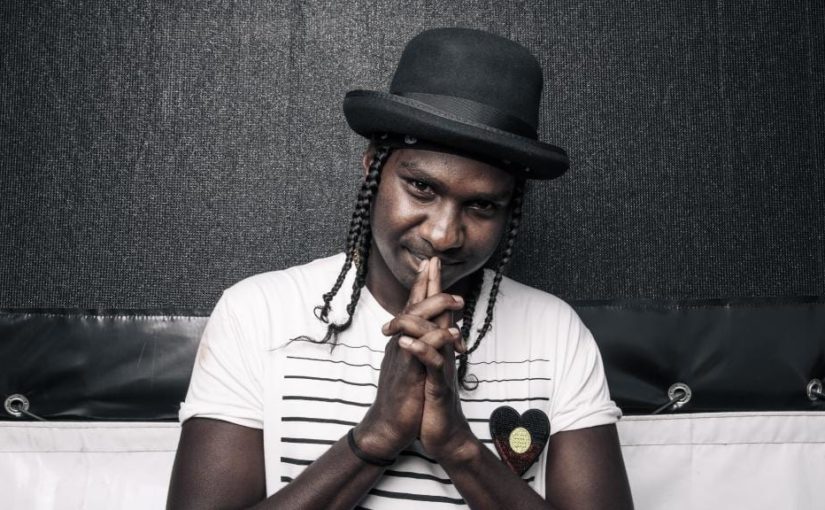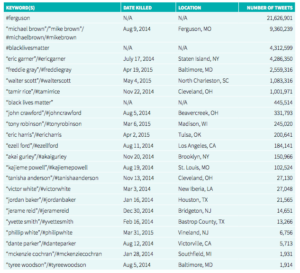Abstract
The paper will explore the different ways that the use of the Internet, in particular social media effects members of minority groups such as the Indigenous community. It will argue that the increasing uptake of social networking sites in rural Indigenous communities, especially among youths, is a positive change as it helps to foster new communities, decrease social isolation and increase political activism. I will explore how participation in online communities such as ‘Blackfulla Revolution’ helps to decrease the sense of isolation that members of rural communities may feel but also address concerns about other ways that social media can detrimentally affect a community real life community too. I will also look closely at the connections that the Internet helps to foster between members of different rural communities and how it helps to build their sense of identity and political awareness. This paper will explore the theory of social capital and how these newly found online communities and sense of political identity can translate into and influence real life action.
Reasons Behind the high level of Social Media use in Indigenous communities.
Since the creation of social networking sites on the Internet the traditional definition of community has been challenge the communities that are created on them. No longer is there a need for a common physical location as the common location has become the internet. These groups are able to form communities with members from all different locations who share a common interest, culture or cause.
In recent times the uptake of social media channels across Australia has been growing but most surprisingly the highest growth rate we have seen is with Indigenous youth between the ages of 15 and 24 (Rice et al, 2016). A survey conducted by McNair Ingenuity Research Institute into the media usage habits of 400 members of the Indigenous community found has that in the wider Australian population 42 per cent of people are members of Facebook versus over 62 per cent of people living in remote Indigenous communities (Callinan, 2014). Reasons suggested by Matt Balogh in the article include the fact that Facebook provides a means of ‘instant and affordable communication’ that can help to bridge the geographical distance between people with similar interests, friends and family (Callinan, 2014).
Boyd (2007) acknowledges that involvement on social media in all youth, not just Indigenous youth has an effect on their identity formation and is used as a tool in modern times to help remove the filter that is put on news by traditional media sources. This may explain the large levels of Indigenous social media uptake as being a minority group they are greatly affected by the filtering most media outlets places on news stories. Engaging and participating in online communities with their peers through social media can help youth to further understand the world around them through the views of their chosen community and help to further develop their sense of cultural identity. For example Indigenous youth who do not live in remote communities and are unable to visit them can connect with those who do online to form their own opinions on social issues that may occur in these places without having to rely on the media. This was not always possible as previously all news was filtered through media outlets and portrayed only the opinion of the outlet. Communities are able to use social media to tell their own stories and for once have the platform to make their voices heard that were once ignored by the media. Rice, Haynes, Royce and Thompson (2016) note that Indigenous youth use social media to help strengthen their identities and feel power and control over their lives. Social media provides them with this opportunity as it allows them to connect with other Indigenous communities online and develop views and opinions on Indigenous issues that media filtering may not have afforded them the chance to do. Further evidence to support that Indigenous youth view social media as fundamental to their sense of identity and community is a survey done by Bronwyn Carlson that found that 73% of Indigenous individuals that answered think social media helps them express their identity whilst 81% were members of online Indigenous communities (Carlson, 2017).
Facebook groups such as ‘Blackfulla Revolution’ allow Indigenous people from all over the country to come together and comment on issues that affect them, that they may have in common with others or would like to make other members aware of. Many of the posts on the page carry messages of support or are discussions about issues that members may not have been exposed to if they were not a part of this community and help to contribute further to each members sense of offline and online identity. Lumby (2010) found that Indigenous youth use Facebook as a way to identify and connect with other Indigenous youth without having to have met them in real life, the Facebook group ‘Blackfulla Revolution’ is one example of this happening with member of this group forming connections with one another without having met in real life. The creation and participation in these communities by Indigenous community members has led to decreased feelings of isolation in remote communities and created a new definition of what a community looks like to them. Traditionally a community was defined as “people living in one locality” (Collins English Dictionary, 2012) but groups like ‘Blackfulla Revolution’ on Facebook have changed this and removed the need for people to be located in the same place to contribute or be a part of a community.
A study conducted by Bronwyn Carlson (2017) and funded by the Australian Research Council on social media revealed that some participants who are members of the Indigenous Community would feel a sense of loss if social media was no longer available similar to the sense of loss they would feel if they were no longer able to be a part of a real life community.
The sense of loss mentioned points to the fact that social media does indeed help to form meaningful relationships that support members of remote Indigenous Communities in the same way as their geographical community does. Social media platforms have allowed communities to form that never would have had the chance before, such as private groups who help to teach Indigenous languages that were thought of as lost (Carlson, 2017). The 8-way model of Aboriginal pedagogy that is explored by Townsend (2015) includes story sharing, community links, deconstruct/reconstruct, non-linear, land links, symbols and images and non-verbal as important ways that Indigenous people learn. These ways of learning can all be enhanced by social media, for example story sharing can be done with greater efficiency on social media as a user is able to share their story to large groups of people at a time (Townsend, 2015). Community links that exist in the real world already can be strengthened and expanded by the creation of social media groups. This correlation between the 8 ways and the principles of social media may also explain why the uptake of social media has been so rapid in Indigenous youth (Townsend, 2015).
Perceived Negatives to the Uptake of Social Media on Indigenous Communities
Some participants in a study on social media uptake revealed that racism, other forms of online abuse and media coverage of traumatic events involving members of the Indigenous community were hard to avoid when using social media (Carlson, 2017). John Barlow the founder of Electronic Frontier Foundation argues that while racism and abuse may still exist on social media the benefits of collaboration, connectivity and the support Indigenous communities members receive in the online world outweighs the negative comments (Carlson, 2017). Montgomery (2014) states that “Indigenous communities are at risk of being negatively affected by online racial vilification and cyber bullying” (Montgomery, 2014). It is mentioned later in this article that most often than not the problems experienced are solved by the community banding together to identify problems and find a solution. The article later states that the internet can also be used to empower Indigenous communities to fight racism (Montgomery, 2014). It can also be argued that as the issues of racism and bullying exist in the real world too they are not exclusive to the Internet and social media. Social media communities such as the ‘Blackfulla Revolution’ page on Facebook can help members of the Indigenous community to deal with the racism they are subjected to online and help to combat it. For example the pinned post on the page is a warning that the page admin will screenshot any racist comments, racist jokes or racist name calling then share it on the page and name and shame the culprit. This is an example of the community taking matters into their own hands and coming together online to support one another.
Another issue that is mentioned when researching the introduction of the social networking sites into remote Indigenous communities is generational disparity. Elders in remote Indigenous communities have expressed concerns that the increase in use of the Internet may cause loss of cultural practices, loss of language and create a lack of respect for elders in the youth in the community (Kral, 2014). Although generational disparity may cause issues between members of the same geographical physical community social media can be used to open up connections and memberships to new communities that were once not possible to join or feel accepted by. Matt Balogh states that the average age of Facebook users in Australia is increasing and this could mean generational disparity becomes less of an issue as older members of the community embrace social media as one of their new ways to communicate and relate to others (Callinan, 2014). A study that was conducted also argues that while non-Indigenous youth around Australia are dropping platforms like Facebook Indigenous youth are increasing and using this platform to engage with older generations and maintain intergenerational connections (Carlson, 2017). Social media also allows older members of the community to feel included and provides them with meaningful family and cultural connectivity (Carlson, 2017). Facebook pages that create online communities devoted to the preservation of traditional practices and languages with much wider audiences than real life communities have been set up to try to combat some of these fears.
The Internet Increasing Political Activism Among the Indigenous Community
With the increasing use of the Internet and social media amongst Indigenous people it is natural that communities have been set up online that support political issues that they are passionate about. Social media helps to increase political activism in the Indigenous Community by helping to alert them to issues that they may not have previously been aware of and also spread awareness about causes that are affecting them to the rest of the community to garner larger support. As social media platforms are also a way to distribute information to the masses instantaneously and call for action ‘Activism 2.0’ has begun (Harlow, 2011). It takes the beliefs and actions of on online community and brings them into the real world. It also allows them to engage by giving them a platform to share the issues that they are concerned about and ‘enables diverse and dissenting Indigenous voices’ to be heard (Dreher, 2015). An example of this kind of political activism online is the 2009 murder of Rodrigo Rosenberg, pages protesting the current President who had been accused of the murder were set up and had gained over 28,000 friends in three days (Fieser, 2009). Rodrigo Rosenberg example is an excellent showcase of the exponential increase in social capital that can be facilitated by social media. Social capital has been defined by Putnam (1993) as “features of social organisation, such as trust, norms, and networks, that can improve the efficiency of society by facilitating coordinated actions.” An example of using social media to increase social capital for an Indigenous political agenda is the page ‘Warriors of the Aboriginal Resistance – WAR’. Pages like this have changed the way politics has worked by helping to create ‘participatory politics’ that is more open to minority groups to have a say (Cohen and Luttig, 2016). Internet users can also use social media to help organise protests that translate their efforts online into real world results through services such as Facebook events like ‘Stolenwealth Games Protest’. This has happened because social media has allowed members of minority groups to get around the filters that the media once placed on news and content and it is not governed by socioeconomic resources (Cohen and Luttig, 2016).
Conclusion
Despite the perceived drawbacks to remote Indigenous communities using the Internet and social media the benefits such as an increased sense of identity, connection to online communities that decrease feelings of isolation, encourage collaboration and build meaningful relationships whilst also increasing in levels of political activism out weight the negatives. This paper proves that although these factors do negatively impact Indigenous communities there are ways that these issues can be combatted and overcome by the community such as the formation of groups that combat racism and preserve traditional practices and languages. Overall social media in Indigenous communities is used to develop a sense of identity, foster new communities, decrease social isolation and increase political activism and the social capital available to these minority groups. For all these reasons I believe that the new definition of community that does not require a physical location that has been created through social networking sites has had a positive effect on the Indigenous community.
References:
Boyd, D. (2007). Why Youth (Heart) Social Network Sites: The Role of Networked Publics in Teenage Social Life. MacArthur Foundation Series on Digital Learning – Youth, Identity, and Digital Media Volume. Retrieved from http://www.danah.org/papers/WhyYouthHeart.pdf
Callinan, T. (2014, August 26). Remote Indigenous Australians rely on Facebook to stay in touch. NITV. Retrieved from https://www.sbs.com.au/nitv/nitv-news/article/2014/08/26/remote-indigenous-australians-rely-facebook-stay-touch
Carlson, B. (2017). Why are Indigenous people such avid users of social media? The Guardian. Retrieved from https://www.theguardian.com/commentisfree/2017/apr/27/why-are- indigenous-people-such-avid-users-of-social-media
Cohen, C.J., & Luttig, M.D. (2016, September 9). How Social Media helps young people – especially minorities and the poor – get politically engaged. The Washington Post. Retrieved from https://www.washingtonpost.com/news/monkey- cage/wp/2016/09/09/how-social-media-helps-young-people-especially-minorities-and- the-poor-get-politically-engaged/?utm_term=.12eef11c110a
William Collins Sons & Co. Ltd. (2012). Collins English Dictionary – Complete and Unabridged. Retrieved from http://www.dictionary.com/browse/community
Dreher, T. (2015). Indigenous voices and mediatized policy-making in the digital age. Information, Communication & Society, 19(1), 23-39. Retrieved from https://www-tandfonline-com.dbgw.lis.curtin.edu.au/doi/full/10.1080/1369118X.2015.1093534?scroll=top&need Access=true
Fieser, E. (2009). A murder prompts demonstrations. Global Post, 16 May. Retrieved from http://www.globalpost.com/dispatch/the-americas/090515/murder-prompts-demonstrations?page=full
Harlow, S. (2011). Social media and social movements: Facebook and an online Guatemalan justice movement that moved offline. New Media and Society, 1-19. DOI:10.1177/146144811410408
Kral, I. (2014). Shifting perceptions, shifting identities: Communication technologies and the altered social, cultural and linguistic ecology in a remote indigenous context. The Australian Journal of Anthropology, 25(2). https://doi-org.dbgw.lis.curtin.edu.au/10.1111/taja.12087
Lumby, B. L. (2010). Cyber-Indigeneity: Urban Indigenous identity on Facebook. The Australian Journal of Indigenous Education, 39, 68-75. Retrieved from http://ro.uow.edu.au/cgi/viewcontent.cgi?article=2271&context=artspapers
Montgomery, H. (2014). The Internet: The benefits, problems and legal difficulties for Indigenous Australians. Indigenous Law Bulletin, 8(14), 19-23. Retrieved from https://search-informit-com- au.dbgw.lis.curtin.edu.au/fullText;dn=20151304;res=AGISPT
Putnam, R. (1993). Making democracy work. Civic traditions in modern Italy. Princeton, N.J.: Princeton University Press.
Rice, E.S., Haynes, E.,Royce, P., & Thompson, S.C. (2015). Social media and digital technology use among Indigenous young people in Australia: a literature review. International Journal for Equity in Health. Retrieved from https://equityhealthj.biomedcentral.com/articles/10.1186/s12939-016-0366-0
Townsend, P.B. (2014). Mob Learning – Digital Communities for Remote Aboriginal and Torres Strait Islander Tertiary Students. Journal of Economic and Social Policy, 17(2). Retrieved from https://epubs.scu.edu.au/cgi/viewcontent.cgi?referer=&httpsredir=1&article=1333&context=jesp
This work is licensed under a Creative Commons Attribution-NonCommercial-NoDerivatives 4.0 International License.





